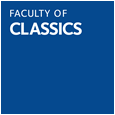This paper discusses the text and interpretation of Hesiod Theogony 860, proposing the emendation οὔρεος ἐν βήσσῃς, ἰν Αἴτνῃ παιπαλοέσσῃ. The interpretative consequences of this emendation, introducing a reference to Mt Etna, are explored. The following passage, Theogony 861-7, is reinterpreted in the light of an immediately preceding reference to the Sicilian volcano. Not only Hesiod, but also Homer is argued to have knowledge of volcanism. Hesiod’s simple, unelaborated reference to Typhoeus’ defeat at Mt Etna implies that the association of Typhoeus with Mt Etna was made by Greeks before Hesiod; it presumably dates to Greek colonizing or proto-colonizing activities in the eighth century BCE. It is consistent with this that the Typhoeus-Etna is one of several mythological episodes in early Greek hexameter poetry that are localized in the West. Finally, the presence of the Typhoeus-Etna link in Hesiod’s Theogony significantly increases the probability that the closely similar descriptions of Typhoeus / Typhon in poems of Pindar (Pythian 1, Pythian 8, Olympian 4, frr. 92-3 Maehler) and in the (Pseudo-)Aeschylean Prometheus Bound depend not on each other, but on an early hexameter account of the Typhonomachy that had attained canonical status by the fifth century BCE. One popular argument for a late dating of the Prometheus Bound, and for its non-Aeschylean authorship, would then need to be discarded.



